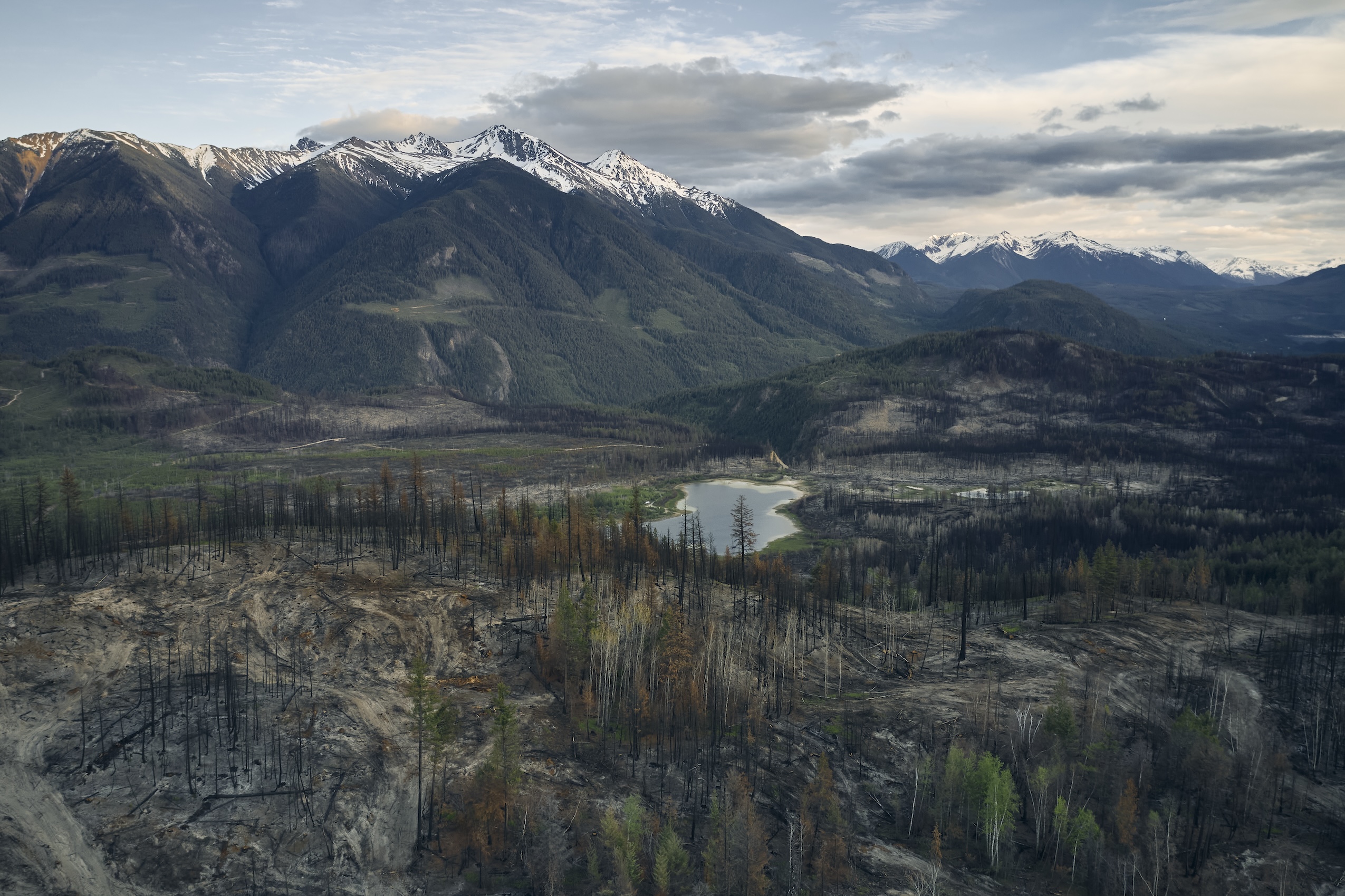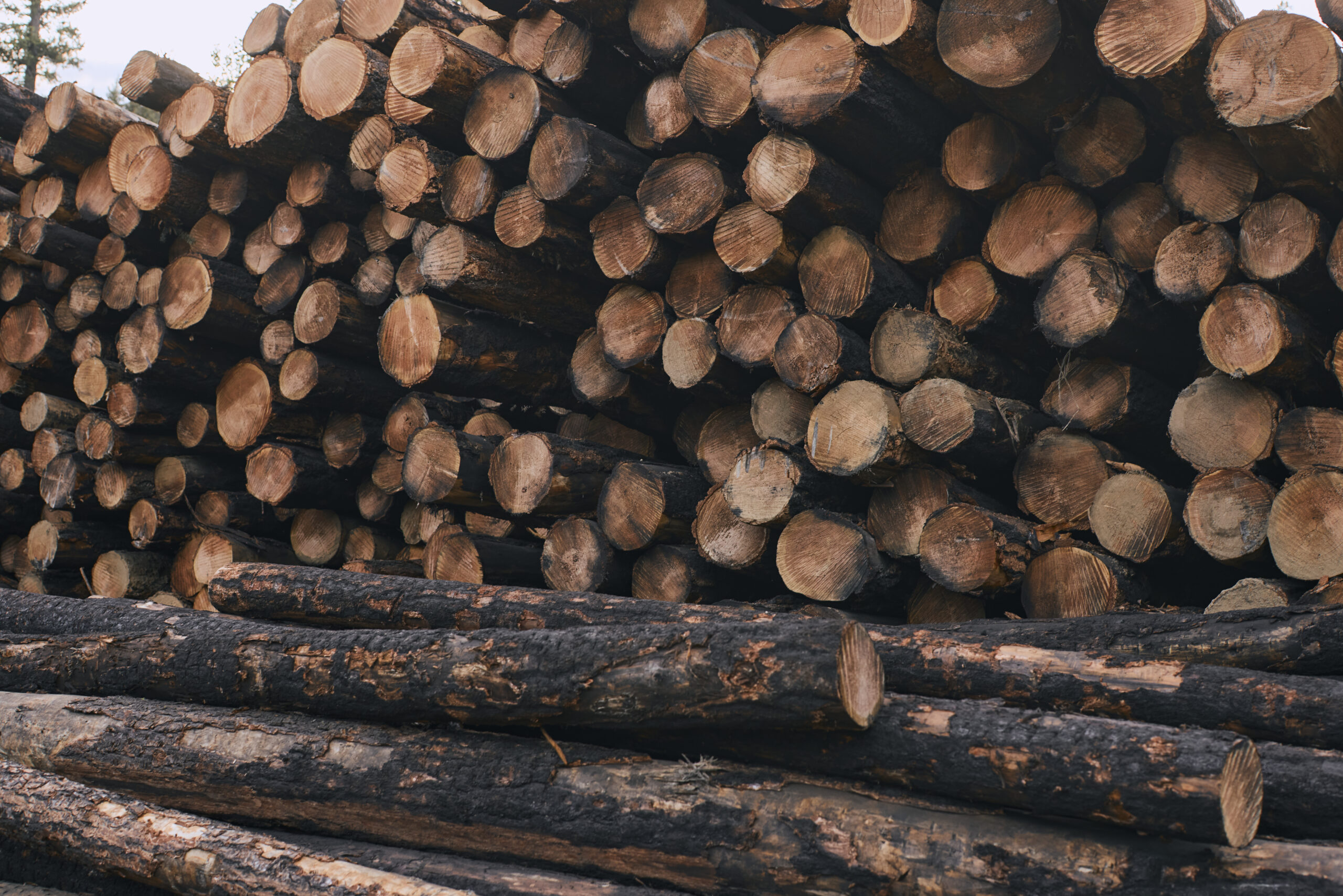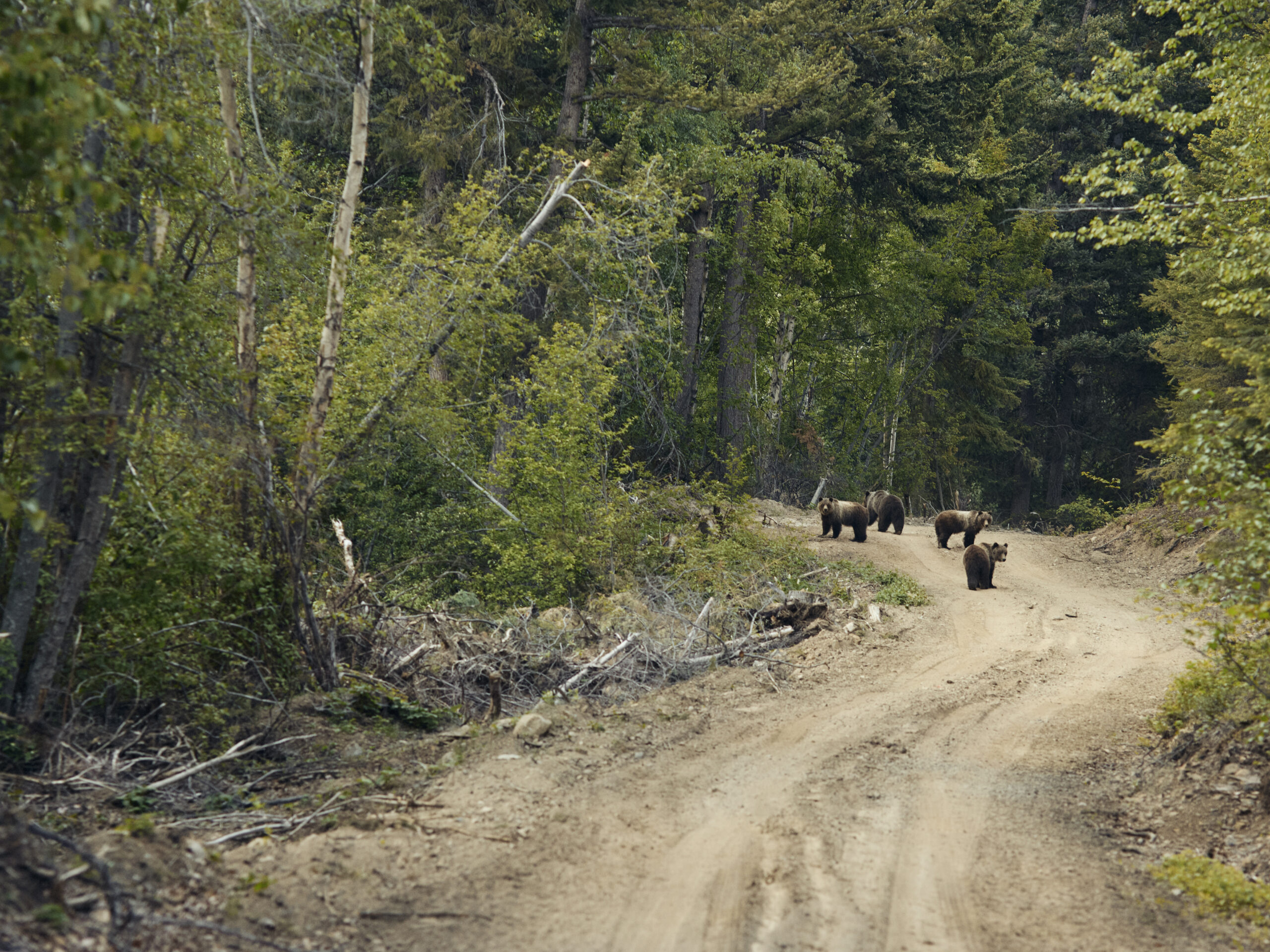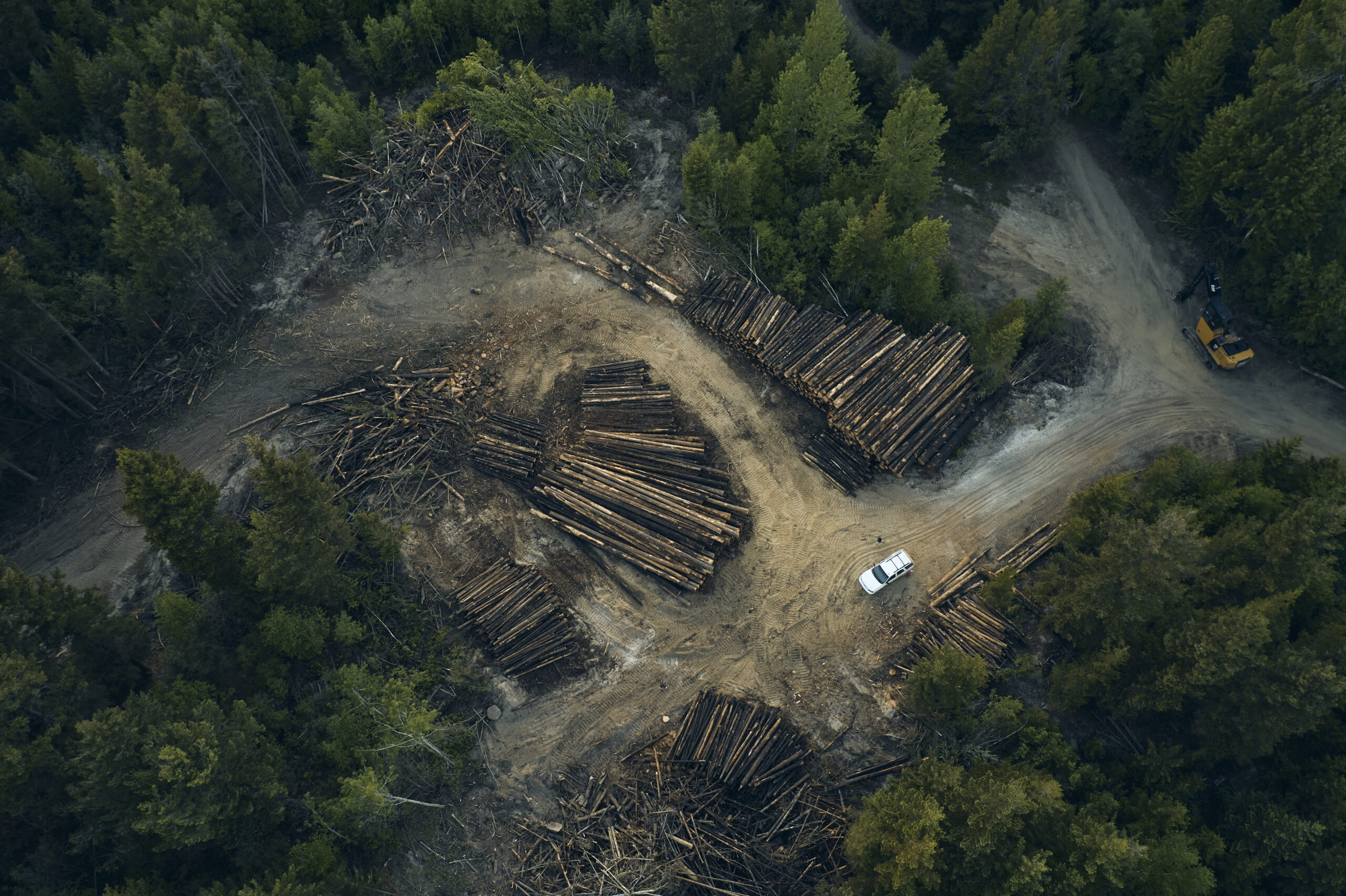
Ontario’s public service heads back to the office, meaning more traffic and emissions
For 15 years and counting, my commute from Mississauga to Toronto has been mired by...
This story is part of In the Line of Fire, a series from The Narwhal digging into what is being done to prepare for — and survive — wildfires.
A relatively new industry is taking off in British Columbia, as forestry companies set their sights on logging burn zones after wildfires.
It’s called salvage logging — and it may disrupt forests’ abilities to naturally recover from fires.
B.C. rules allow companies to remove the last remaining living trees from burn zones. Those trees can offer critical support for healing ecosystems. Now some experts and affected communities, including First Nations, are raising the alarm and calling for more selective logging practices.

Despite these concerns, logging companies are not required to address the ecological risks of salvage logging. And the provincial government is clearing the way to make salvage logging even easier, giving companies a slew of profitable perks for harvesting areas burned in B.C. wildfires, including logging the remaining living trees at a discounted rate.
Here are five things you need to know about salvage logging in B.C.
Wildfire salvage, or salvage logging, typically means clear cutting burned areas.
In almost every year since 2018, logging cutblocks in five wildfire zones in B.C.’s Interior were each larger than the land-mass of the city of Vancouver, according to The Narwhal’s analysis of provincial data. According to an email from B.C.’s Ministry of Forests, wildfire salvage logging in 2022 made up about 10 per cent of the province’s annual cut — a 100-fold increase over the past decade.
As mills close around the province and workers are laid off, the B.C. government has announced policies to make it cheaper and faster for companies to access salvage logging licences.
Under B.C.’s wildfire salvage logging rules, forestry companies can often get premium wood — including green patches inside a cutting area — at a substantial discount.
Companies pay a “stumpage” fee to the government for logging on public land. They can qualify for discounted salvage stumping rates for an entire cutting area as long as some of the wood is considered to be “fire damaged” — ranging from mild, superficial burning to severe charring. The more burned wood in the area, the higher the discount companies can receive.
But fires are patchy, and they often leave sections of green, surviving trees amidst the burned ones. Those patches play an important role in a burned forest’s recovery.
“It can be in their DNA that they’ve withstood the fire,” said fire ecologist Kira Hoffman says in an interview. “They can have species that are going to be really good at creating the next generation of forest.”
Get the inside scoop on The Narwhal’s environment and climate reporting by signing up for our free newsletter.
The Narwhal’s data analysis found one company, Tolko Industries, paid just 25 cents per cubic metre — a cubic metre is roughly an average wooden phone pole — for mostly construction grade live wood harvested from the White Rock Creek fire zone near Vernon, B.C.
That’s 99 per cent less than the rate Tolko would pay for trees just outside the burn zone. Typically, the 25-cent rate is reserved for the lowest-quality wood.
B.C. doesn’t track how many live or green trees are logged within wildfire zones. But the provincial forests ministry does keep tabs on the quality of wood companies log.
The Narwhal’s analysis of provincial data for active logging in five wildfire areas in B.C.’s Interior found more than half the logs harvested — including from old-growth forests — were classified as construction grade, meaning they could have come from trees that survived the fire.

Not all burned trees die. Whether they survive depends on many factors, including the thickness of its bark, and how far the burn travelled into a tree’s living layer.
Even if they eventually die from fire damage, burned trees can still play a key role in the ecosystem for the years they remain standing, Phil Burton, a biologist at the University of Northern British Columbia, told The Narwhal.
Many species and ecosystems evolved in tandem with fire and benefit from a landscape left undisturbed after a burn. Lodgepole pine trees produce special, waxy cones that wait for the melting power of wildfire to release their seeds. Green trees in fire zones can offer refuge for wildlife, and burned, dead trees provide nesting spots for birds like tree swallows. They also hold water in the soil and shield the earth from the drying effects of wind and sun.
When water hits salvage-logged ground, it can take the soil’s structure and nutrients with it as it flows away.
A study of wildfire salvage in the Rocky Mountains in Alberta found salvaged watersheds had 28 times more sediment than forests that burned but weren’t salvage-logged. That sediment can suffocate fish eggs and transport pollutants. The study found some areas had not recovered after 11 years.


B.C.’s former chief forester Diane Nicholls cited those findings in a 2018 guidance document for forest professionals. She said salvage logging impacts “may require long timelines for remediation (i.e., decades) or they may be irreversible in the context of forest management time horizons.”
“Live trees must be left on the landscape, wherever possible, even if they are within the [timber harvesting land base],” Nicholls wrote.
According to an internal briefing note, the B.C. government is aware of the impacts of salvage logging. The note, released through a freedom of information request, acknowledges “salvage operations may damage natural regeneration” in forests not as severely burned by B.C. wildfires.
The B.C. government does not have regulations that compel companies to address the ecological risks of salvage logging, a spokesperson for the Ministry of Forests told The Narwhal.
Wildfire ecologist Robert Gray says salvage logging “may be exacerbating” the risk of wildfire. It can contribute to the build-up of dead wood and debris that act as fuel for wildfires.
In areas that have historically experienced low-intensity, frequent B.C. wildfires, such as the dry forests of the province’s Southern Interior, Gray advocates for removing the small stuff — younger trees and brush — to reduce the risk of “reburn” where a fire burns hotter and more intensely a second time.
But he says taking out the bigger trees, which are often more fire-resistant, doesn’t add up.
— Compiled by Steph Kwetásel’wet Wood
Enbridge Gas will face Waterloo Region in a hearing before the Ontario Energy Board to renew an agreement that would allow the company to continue...
Continue reading
For 15 years and counting, my commute from Mississauga to Toronto has been mired by...

For our last weekly newsletter of the year, we wanted to share some highlights from...

The fossil fuel giant says its agreement to build pipelines without paying for the right...